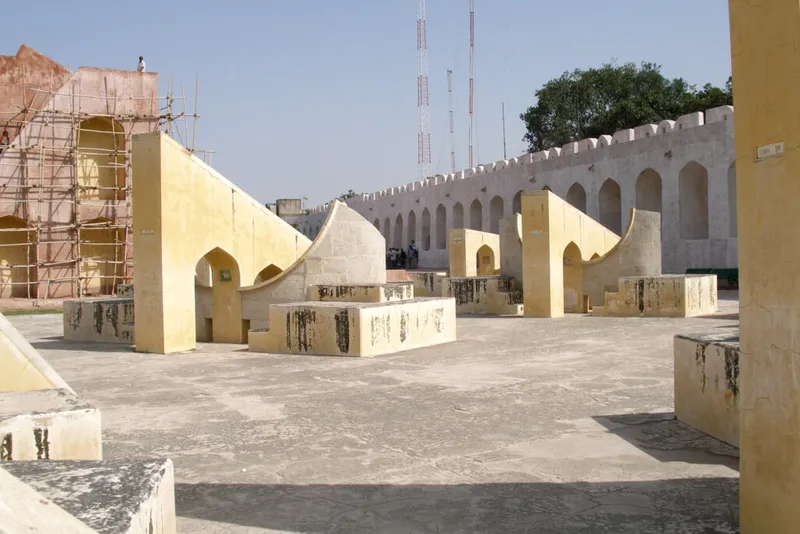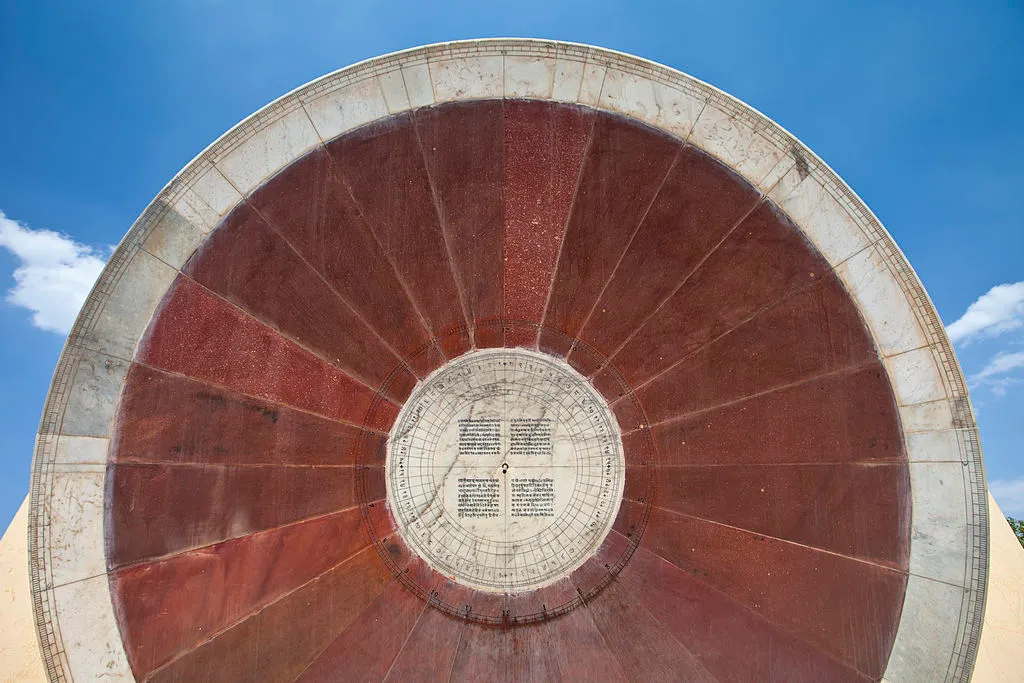Though it looks like a sculpture garden, the Jantar Mantar in Jaipur is a colossal, 18th-Century astronomical observatory.
It is one of five observatories in India to bear the name – the term is not a title, but Sanskrit for ‘calculation instrument’.
All were built by Maharaja Sawai Jai Singh II.
Read our guides to Stonehenge astronomy and astronomy at the Pyramids of Giza

After finding that Muslim and Hindu calendars did not include accurate positions of the planets, he ordered a string of observatories to be built, with instruments 10 to 100 times larger than any that had gone before.
The Jantar Mantar in Jaipur was completed in 1734, with 19 majestic instruments built from lime plaster, marble, stone and bronze, some of which we explore here.
It is a place of scientific significance and great beauty – and as of 2010, a UNESCO World Heritage Site.
Here we're taking a look at some of the instruments within the Jantar Mantar and what they were designed for.
Jai Prakash Yantra

This instrument was designed to observe the position of the Sun and has a diameter of nearly 5.5m.
It is a concave, hemispherical bowl with a metal plate suspended in the centre by crosshairs.
The wires are stretched north to south and east to west, and the central plate can be used to determine the Sun’s position by reading off where the shadow falls on the graduated chart marked on the instrument.
Other heavenly bodies can be tracked too.
Paths cut into the instrument allow observers to walk around inside it until the object overhead is aligned with the suspended plate.
Their position within the instrument is then read off from the markings on its hemispherical bowl.
Vrihat Samrat Yantra

The Vrihat Samrat Yantra or ‘supreme instrument’ is the biggest in Jaipur, created to record the time.
It is believed to be the biggest sundial in the world and can give the time to an accuracy of two seconds.
The structure is a 27.5m high and 45m long triangle. Its hypotenuse is parallel to the Earth’s axis and acts as a gnomon, the part of the sundial that casts the shadow.
On each side of the gnomon is a quarter circle, inclined to the plane of the equator.
The quadrants are divided into six hours each to represent morning and afternoon, then further split into
15 minutes and then again into one minute parts.
A minute is divided into 10 sub-divisions of six seconds each.
Unnatamsa

‘Unnat’ means elevated in Sanskrit while ‘amsa’ is division or degree of arc.
This instrument is a large graduated brass circle, which is hung vertically from a supporting beam and allowed to rotate freely.
There are two cross beams, one vertical and the other horizontal.
At the meeting point of the two a tube can be moved vertically to align it to any celestial object.
The rim of the brass circle allows the angle of the device to be measured to an accuracy of a 1/10th of a degree.
Yantra Raj

The Yantra Raj is a giant astrolabe for observing ascendants, altitudes and the position of the Sun and other celestial bodies.
It consists of two circular discs, made from seven alloys to prevent it warping in different weather conditions.
It is believed that Jai Singh was quite fascinated with the study of astrolabes and Yantra Raj is the result of compiling a number of them.
Ram Yantra

This instrument of two identical stone structures measures altitudes and azimuths.
Each building possesses a cylindrical pillar at the centre and an outer wall split into 12 columns, themselves connected to the pillar by stone triangles.
These are graduations, so that the position of the Sun can be determined by reading off the position of the central pillar’s shadow.
The position of stars can be determined by aligning the star with the top of the pillar and then reading off the position of the observer’s eye.
Nadivalaya

Nadivalaya was designed for measuring the time and the movement of the Sun across the equator.
It is comprised of two circular plates that are parallel to the equator, facing north and south.
Iron rods emerge perpendicular to the centre, and parallel to the axis of Earth’s rotation, to act as gnomons.
The two plates are used at different times of the year.
The dial plate facing south is sunlit from the autumn equinox to the spring equinox and tells the time.
The rest of the year the northern face is used. However on the date of the equinox itself the Sun illuminates both faces.
This guide appeared in the March 2016 issue of BBC Sky at Night Magazine
